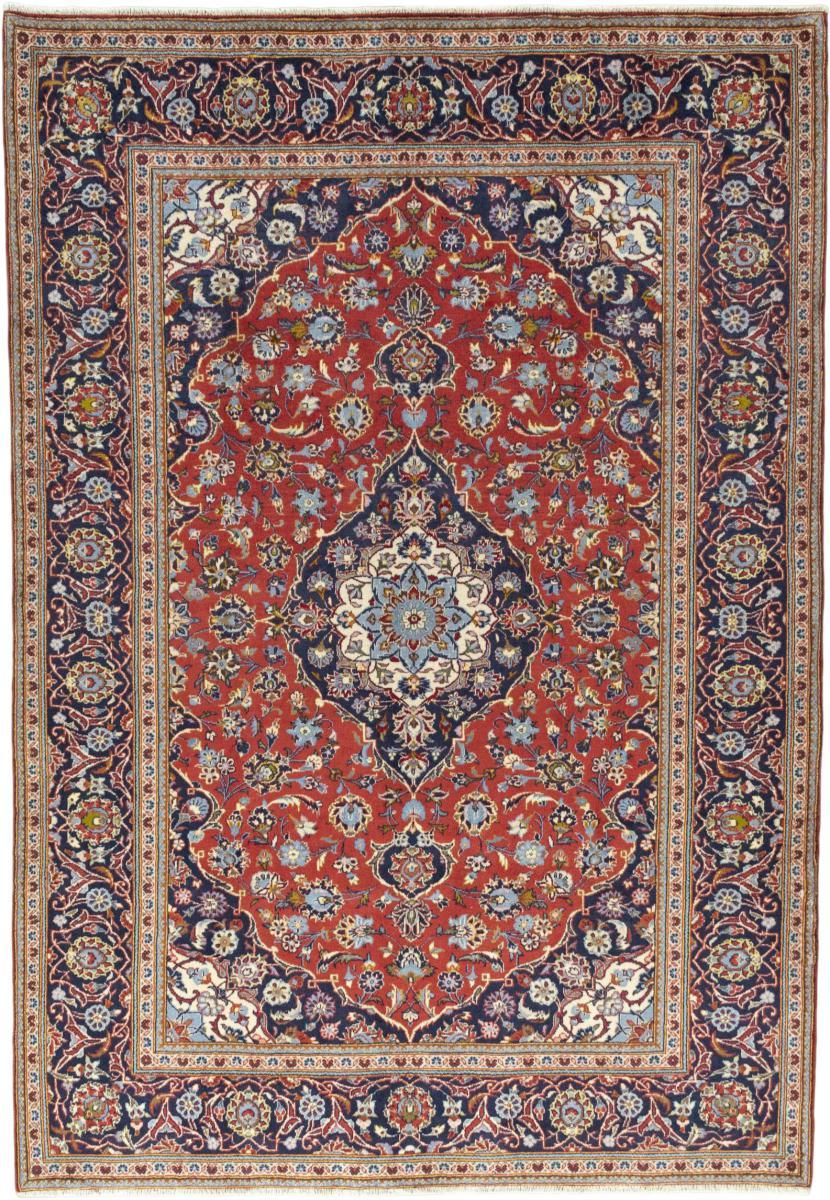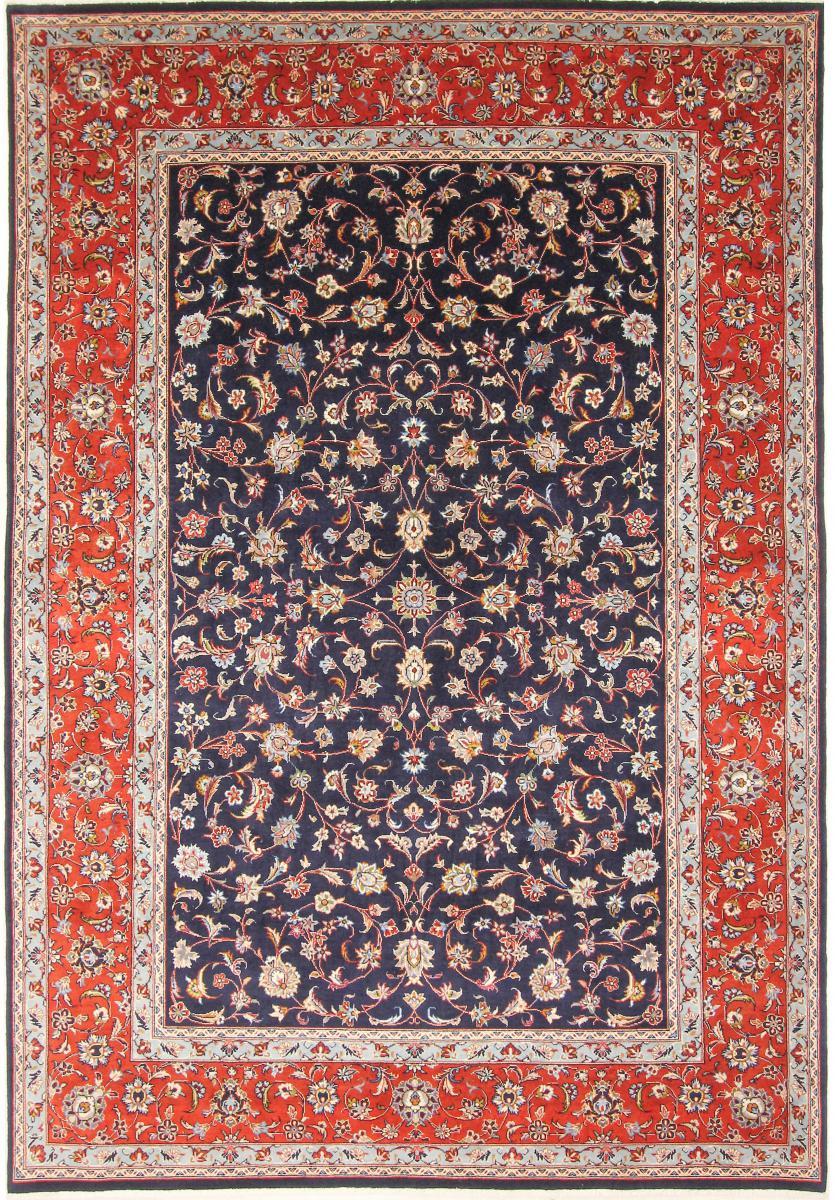Yazd handwoven carpet and its features
Due to the geographical and climatic characteristics of the desert region, the residents of Yazd are skilled in handicrafts, especially cloth weaving and carpet weaving, making patterns and dyeing in the traditional way, and they have created beautiful and valuable works to provide necessities and earn a living. The city of Yazd has been the most important center of weaving traditional fabrics in Iran, but unfortunately, with the establishment of industrial textile factories, the traditional textiles of this city were affected and started to decline. This caused the people of Yazd to gradually move from cloth weaving to carpet weaving and choose it as an alternative profession to cloth weaving. In the following, we intend to introduce you to the features of carpet weaving in this desert city.
A historical look at Yazd
Yazd province, located in the center of Iran, is one of the oldest continuously inhabited cities in the world, dating back thousands of years. In some historical sources, the building of some historical cities of this province such as "Maybod" have been attributed to Prophet Suleiman, "Yazd" to Zahak and Iskandar the Macedonian, and "Abarkoh" to Prophet Ibrahim. This shows the historical and cultural background of this region. This desert city, which is located between the northern desert plain and the southern Lut plain, is a testimony of human adaptation to some of the harshest environments, and this resistance is also reflected in the strong and durable carpets of Yazd.
History of carpet weaving in Yazd
A specific and reliable history of the first woven carpets in Yazd and its surrounding areas is not available in order to obtain an exact date for the beginning of carpet weaving in this area. But it must be said that the art of carpet weaving in Yazd is deeply intertwined with the history of this city. During the Achaemenid Empire in Iran, this region was an important center of high-quality textile production, and this tradition continued until the Islamic period. Over time, Yazd textile artisans turned to carpet weaving and their expertise in fabric design had a great impact on Yazd carpet patterns. It was between 1940 and 1945 that the government started several carpet weaving factories in this city and some businessmen also started to establish carpet weaving workshops in Yazd, so that now in the cities and villages of this region such as Ardakan, Abarkoh, Carpet weaving workshops are active in Yazd, Khatam, Taft, Sadouq, Bafaq, Mehriz and Meibod. Today, about 5% of the production of handwoven carpets in Yazd province is sold inside the province, 45% is sold in other parts of Iran, and 50% goes to foreign markets.
Introduction of Yazd handwoven carpet patterns
Yazd rugs are famous for their intricate designs, with motifs that often have a central bergamot and a richly decorated background full of floral motifs inspired by the region's natural environment. The borders of these carpets are usually decorated with delicate and intricate designs that increase their visual appeal. These motifs are not only stunning, but also a testament to the skill and attention to detail of Yazdi weavers.

Imitation of Kerman carpet in Yazd
In the past, many well-known and non-native businessmen were interested in buying Kerman carpets due to the considerable fame that Kerman carpets had gained and the existence of expert designers, dyers, and manufacturers. Trade, exchange of goods with goods and many other things such as cheaper wages in this region became the reason for the arrival of carpets with original Kerman motifs to Yazd in a certain period. As a result, many Yazdi producers took help from Kermani designers, and all of these factors led to the presence and imitation of many Kerman carpets in the Yazd region. Yazd woven carpets that are influenced by Kerman carpets can be distinguished as follows: the red color obtained from the red grain as well as light or dark blue is dominant in these Yazdi carpets, and in addition, the blue streaks of the weft can also be seen on the back of the carpet. are. An example of Kerman designs in Yazd is a design known as "Yazdi tulip" which was first woven by Yazdi weavers in Yazd city. This design is a simple floor lath and bergamot design in the shape of a bouquet (lotus and rose flowers). The bergamot in the "Lale Yazdi" carpet is a rich design, with the shape of a bunch of flowers and tulips visible in each bergamot head. The coloring of this carpet is as follows: lacquer color in the background, turquoise color in the laces, navy color in the wide border, lacquer in the narrow border and khaki color in the edges.
Imitation of Isfahan and Kashan carpets in Yazd
After the decline of Kerman carpet due to issues such as knotless weaving and as a result the quality of carpets decreased, the weavers of Yazd started imitating these carpets due to the large orders of Isfahan carpets. Even now, traces of woven carpets from Yazd can be seen in homes imitating the designs and patterns of carpets from Isfahan, Nayin and Kashan. Over the past 30 years, Yazd carpets have been influenced by Kashan carpets and this continues. Currently, the common design and pattern in different regions of the province is Lakh and Taranj Kashan, and now Yazd carpet with Kashan pattern is known in the market. In fact, if we divide Yazd province into two parts, northern and southern, the northern regions of the province follow the style of Kashan, Isfahan and Nain, and the southern regions follow the style of Kerman.
Designing original patterns of Yazd for carpet weaving
In recent years, some of the authentic and ancient motifs of Yazd have been transferred by handwoven fabric designers on the checkered paper of the carpet map and they have designed patterns with the originality and identity of Yazdi, but unfortunately, it must be said that today only a handful of exquisite and precious examples of Yazd carpets can be found in Viewed some personal collections. Despite its originality, the designs and roles of this region are not well known. According to some producers of Yazd carpets, in the past designs such as Ahmad Mandabadi (Ahmad Mohammadabadi) were woven in the village of Mohammadabad, Yazd, which is characterized by a rectangular design with a dark background. Also, Herati design and Khakhti design are also woven in Yazd.
Carpet known as "War Chief"
Among other projects of Yazd region, we can mention "Sardar Jangi" project, which is one of the old and famous projects of this region. In the past, the background of this contagious design was lacquered and its border was navy blue. Today, there have been changes in the map of this carpet and its color has changed a little. In this way, the color of the text of the carpet is cream and its border is earthy. The reason why this carpet is named after "Sardar Jangi" is that this design was given as a gift to Sardar Bakhtiari, who created security in Yazd, and became known by the same name.
Technical features of Yazd handwoven carpet:
In the following, we intend to introduce you to the technical features of carpet weaving in Yazd city.
Color and material of Yazd carpet
Yazd carpets are usually woven using high-quality local wool for pile, and cotton is often used for warp and weft. This combination of materials results in a carpet that is both soft and durable and is designed to resist abrasion. The colors used in these rugs often reflect the surrounding landscape, with earthy browns, reds and oranges, alongside blues and greens created using natural dyes obtained from local plants and minerals. In general, between 12 and 30 different colors are used in Yazd carpet. In the past, the common color for the background of carpets often included lacquer and navy blue, but currently, the background of most Yazd woven carpets is cream or green. Navy, khaki and cashmere colors are usually considered for the border.
The type of knot and thread in the Yazd carpet
Yazd carpets are known for their delicate knotting technique, and the weavers mainly use the Iranian knot (or Saneh). The knot density in Yazd carpet can vary from 120 to 840 knots per square inch (35 knots per 6.5 cm) depending on the complexity of the design and the weaver.
Common dimensions in Yazd carpets
Yazdi handwoven carpets are usually woven in sizes of 3x4, 3.5x2.5, 2x3, 2.5x2.5 and 1x1.
Yazd, living museum and carpet weaving center
Yazd is more than a city that has a rich history in carpet weaving. This city is actually a living museum of Iranian culture and architecture. The city is home to stunning historical sites such as the Jame Mosque, with its magnificent tiled entrance and Iran's tallest minarets, and the ancient Zoroastrian Fire Temple, which houses a fire that has burned continuously for over 1,500 years. The city's winding streets are lined with traditional adobe houses and wind towers.
Final word
Yazd is one of the historical cities of Iran that has a long history in the textile industry. This artistic background has caused Yazdi artists to have something to say in the art of carpet weaving and create incredible masterpieces in this field, which unfortunately we have few of them now. Designs such as "Sardar Jangi" and "Yazdi Tulip" are among the most original and famous designs of Yazd handwoven carpets, and in addition, the texture of carpets with lach and tanraj, kashti and herati designs are also common in this region. In the end, it should be said that Yazd is a city that, in addition to having historical and touristic attractions, also has very exquisite and precious handwoven carpets and textiles.
You can inquire about Buying Handwoven Carpets , Buying Handwoven Kilim and Mats , and Buying Handwoven Pictorial Rug Tableaus online from the Hoveida Carpet Store and register all your orders and Wherever you are in the world, deliver it to the desired address in less than 4 working days.
If you are interested in reading other articles in the field of Handwoven carpets or Handwoven Pictorial Rug Tableaus , please refer to Hoveida Carpet Commercial .
Leave a comment
Your email address will not be published. Required fields are marked *












